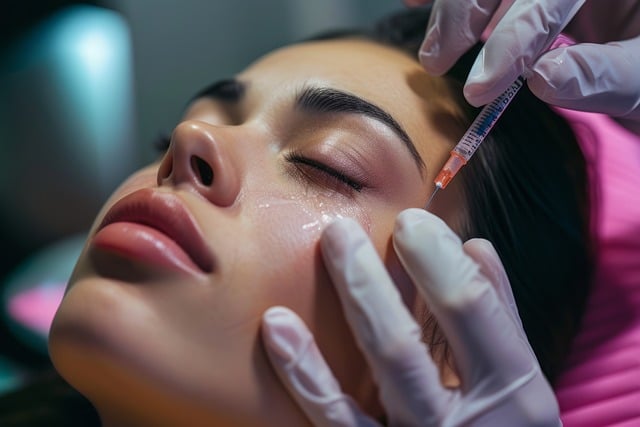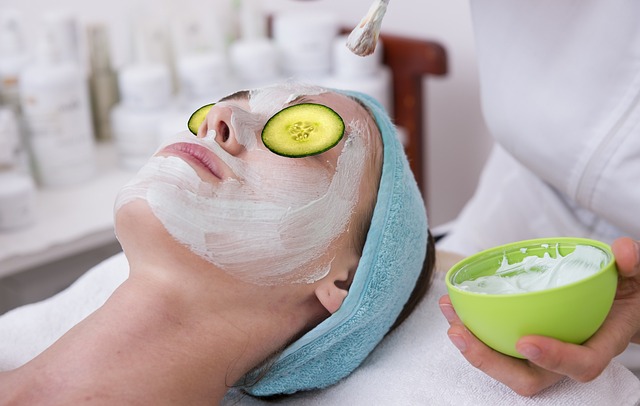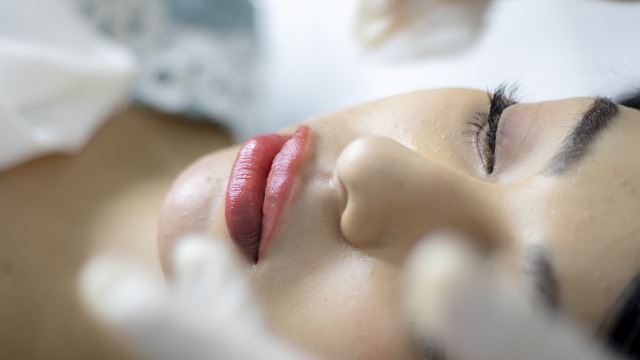Botox for facial contouring is a non-surgical procedure using botulinum toxin (Botox) injections to relax facial muscles, reducing dynamic lines and wrinkles around the jawline, cheeks, and forehead. It offers a quick, painless treatment with minimal recovery time, ideal for defining jawlines, enhancing cheekbones, and restoring youthful symmetry. Suitable candidates have realistic expectations, good health, and specific skin/medical conditions. The procedure takes less than 30 minutes, with results lasting 3-6 months. Side effects are generally mild, subsiding within days. For optimal safety and results, consult experienced practitioners.
“Discover the transformative power of Non-Invasive Jawline Botox—a cutting-edge approach to facial contouring. This innovative treatment is revolutionizing the way we enhance facial aesthetics, offering a subtle yet effective solution for achieving a defined jawline.
In this comprehensive guide, we’ll explore the science behind Jawline Botox, its numerous benefits, and who makes an ideal candidate. From understanding the procedure to deciphering safety concerns, we’ve got you covered. Get ready to unlock your confident smile.”
Understanding Facial Contouring with Botox

Facial contouring using Botox has become a popular non-surgical aesthetic procedure, offering a subtle yet effective way to enhance facial features. By injecting Botox into specific muscles, practitioners can relax them, reducing the appearance of dynamic lines and wrinkles around the jawline, cheeks, and forehead. This technique is particularly appealing as it allows individuals to achieve a more defined jawline and sculpted look without incisions or lengthy recovery periods.
Botox for facial contouring works by temporarily paralyzing muscles, which can prevent them from contracting and causing unwanted creases in the skin. As a result, it smooths out the skin’s surface, creating a refined and balanced facial profile. This procedure is often sought after by those looking to minimize the appearance of jowls, improve the contour of their cheekbones, or achieve a more youthful and harmonious facial symmetry.
The Science Behind Jawline Botox

Botox for facial contouring, particularly on the jawline, has gained popularity as a non-surgical aesthetic treatment. The procedure involves injecting a small amount of Botox into specific muscles along the jawline to temporarily relax them. This relaxation results in a reduction of muscle tension and subsequent softening of the skin, creating a more defined and sculpted look.
The science behind it leverages the natural properties of Botox, a neurotoxin that blocks nerve signals to muscle. By targeting the masseter and temporalis muscles, which are responsible for chewing and jaw clenching, Botox can prevent these muscles from contracting too strongly. This action minimizes the appearance of facial tension and promotes a more harmonious facial contour, including a slimmer jawline.
Benefits of Non-Invasive Jawline Enhancement

Non-invasive jawline enhancement using Botox offers a multitude of benefits for those seeking facial contouring without surgery. This procedure is increasingly popular as it provides a natural, subtle enhancement to the jawline and chin area, reducing the appearance of jowls and defining facial features. By relaxing specific muscle groups, Botox can lift and tighten skin, creating a more defined jawline and a youthful appearance.
Unlike surgical procedures, non-invasive Botox treatments are quick, painless, and have minimal downtime. It is suitable for individuals looking to improve their facial balance without the risks associated with surgery. The results are typically visible within days, and because Botox is a temporary filler, it provides flexibility in adjusting the treatment as needed over time.
Candidate Selection for Jawline Botox Treatment

When considering jawline botox for facial contouring, candidate selection is crucial. The ideal candidate should have realistic expectations and be in overall good health. This treatment is best suited for individuals seeking a subtle enhancement to their jawline or neck area, aiming to reduce the appearance of bone structure or muscle definition. It’s important to note that botox for facial contouring is not a permanent solution; results typically last between 3-6 months, and repeat treatments are necessary for sustained effects.
During the consultation process, patients should discuss their specific concerns and goals with their provider. Factors like skin condition, medical history, and lifestyle will be considered to determine if botox injections are an appropriate choice. Those with certain medical conditions or on specific medications may not be suitable candidates. Moreover, individuals expecting significant weight loss or gain in the near future should defer treatment until their body has stabilised to avoid potential complications.
The Procedure: What to Expect

The procedure for non-invasive jawline botox starts with a consultation where a qualified practitioner assesses your facial structure and identifies areas suitable for treatment. During the actual session, a fine needle is used to inject tiny amounts of botulinum toxin into specific muscles along the jawline. This treatment is typically quick, often taking less than 30 minutes, and is usually performed on an outpatient basis.
You can expect minimal discomfort during the procedure, with many patients reporting only a slight stinging sensation at the injection sites. After the treatment, there may be some mild redness or swelling in the treated areas, but these side effects are usually temporary and subside within a few days. It’s important to remember that botox for facial contouring is a non-permanent solution, and results will gradually fade over time, typically lasting between 3 to 6 months.
Recovery and Results: A Timeline

After a non-invasive jawline Botox procedure, it’s crucial to understand the recovery timeline and expected results. Typically, patients experience minimal downtime, often returning to their daily routines within a day or two. Swelling and redness are common side effects, but these usually subside within 24 to 72 hours. As the Botox takes effect, you’ll start to see the desired facial contouring results, with the jawline appearing more defined and sculpted.
The full impact of the treatment becomes apparent over several weeks as the Botox relaxes the muscle activity in the treated area. Results can last for up to 4-6 months, after which a touch-up session may be recommended to maintain the enhanced facial structure. This timeline offers a clear guide for patients, ensuring they know what to expect during and after the procedure.
Safety, Risks, and Common Misconceptions

Botox for facial contouring, particularly when applied to the jawline, has gained popularity as a non-invasive aesthetic procedure. While it offers significant benefits in defining facial features and reducing the appearance of jowls, safety should always be a top priority. Unlike invasive surgical procedures, Botox is generally considered safe when administered by a qualified healthcare professional. However, like any medical treatment, it carries certain risks, including bruising, swelling, headaches, or muscle weakness in rare cases.
One common misconception about jawline Botox is that it leads to a rigid or unnatural look. This fear often stems from early experiences with excessive botulinum toxin injections. In reality, when administered correctly, Botox softens facial lines and contours the jawline without causing muscular paralysis. It’s crucial for individuals considering this procedure to consult with experienced practitioners who can provide personalized guidance, address concerns, and ensure optimal results while minimizing potential risks.
